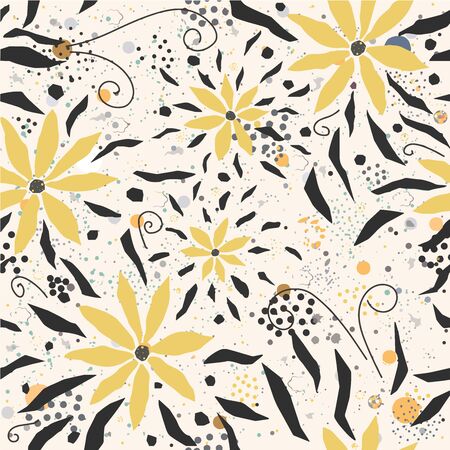1. Understanding Winter Plant Protection Needs
When winter rolls around in the U.S., gardeners face a unique set of challenges. Cold temperatures, frost, snow, ice, and harsh winds can all take a toll on your plants, whether you’re tending to a backyard veggie patch or caring for delicate ornamentals. Protecting your plants isn’t just about keeping them alive—it’s about helping them thrive so they bounce back strong in spring.
Why Do Plants Need Protection During U.S. Winters?
Most regions in the United States experience at least occasional freezing temperatures during winter months. Even hardy plants can suffer when exposed to sudden temperature drops, windburn, or cycles of freezing and thawing. Some areas, like the Midwest or Northeast, face long periods of deep cold, while milder climates on the West Coast may have unpredictable frosts that catch gardeners off guard.
Main Challenges Gardeners Face
| Challenge | Description |
|---|---|
| Frost Damage | Frost can kill tender leaves and buds overnight. |
| Freezing Temperatures | Extended cold can damage roots and stems, especially for non-native plants. |
| Windburn | Dry winter winds draw moisture from leaves and stems, causing dehydration. |
| Heavy Snow & Ice | Weight can break branches and crush smaller plants. |
| Freeze-Thaw Cycles | Repeated freezing and thawing can heave plants out of the soil or crack roots. |
The Role of Winter Fabrics
This is where choosing the right winter fabrics comes into play. The right materials act as a shield—helping trap warmth, block harsh winds, and reduce direct exposure to frost. Picking the right fabric means understanding your local climate conditions and what your specific plants need to make it through winter healthy and strong.
2. Popular Fabrics and Their Purposes
Understanding Plant Protection Fabrics
When cold weather hits, the right fabric can make all the difference in keeping your garden safe. In the U.S., gardeners use a handful of tried-and-true materials to shield their plants from winter’s bite. Here’s a simple rundown of the most popular options you’ll find at local garden centers or hardware stores.
Common Winter Fabrics for Gardens
| Fabric Type | Main Purpose | Best For | Pros | Cons |
|---|---|---|---|---|
| Row Cover (Floating Row Cover) | Lightweight protection against frost and pests | Tender veggies, leafy greens, seedlings | Breathable, lets in light & water, reusable | Limited heavy freeze protection, may need anchoring |
| Burlap | Windbreak and insulation for shrubs/trees | Evergreens, roses, young trees | Naturally breathable, biodegradable, easy to shape | Holds moisture (can freeze), blocks some sunlight |
| Frost Cloth (Garden Blanket) | Heavier-duty cold and frost protection | Citrus trees, peppers, sensitive annuals/perennials | Warmer than row cover, durable, easy to install/remove | May need support frame, less light transmission |
| Plastic Sheeting (Poly Film) | Heavy-duty barrier against snow and deep freezes | Larger beds, hoop houses, raised beds with frames | Waterproof, traps heat well, affordable in bulk | No breathability (venting needed), risk of overheating on sunny days |
Quick Tips for Choosing Fabrics:
- Breathe Easy: Use breathable fabrics like row covers or burlap for most plants to avoid mold and rot.
- Cold Snaps: Choose frost cloth or plastic sheeting if you expect hard freezes or snowstorms.
- Sizing Up: Make sure your fabric fully covers the plant and reaches the ground—this keeps warmth in and critters out.
- Avoid Suffocation: Always remove plastic on sunny days or after severe weather to prevent overheating or moisture buildup.
A Handy Fabric Choice Guide:
If you’re not sure which fabric fits your needs, start with a lightweight row cover for general frost protection. Step up to frost cloth or plastic sheeting when temperatures are expected to dip below 28°F (-2°C) or if you’re protecting delicate crops that don’t handle cold well. For shrubs and trees exposed to windburn or ice storms, burlap is a classic American solution that’s stood the test of time.

3. Matching Fabrics to Your Climate
When it comes to protecting your plants during winter, picking the right fabric is all about understanding your local weather and what your plants need. Across the U.S., winter can mean anything from mild chills to deep freezes. Here’s how you can choose the best plant protection fabrics based on where you live and what you grow.
Understanding U.S. Regional Weather Patterns
The U.S. has a variety of climates—from the wet Pacific Northwest to the dry Southwest, and from frigid Midwest winters to milder Southern states. Each region has different challenges when it comes to cold weather, so it’s important to match your plant cover material with your local climate.
Common Regional Weather Challenges
| Region | Typical Winter Conditions | Main Concerns for Plants |
|---|---|---|
| Northeast & Midwest | Heavy snow, freezing temps, strong winds | Frost damage, wind burn, snow load |
| Southeast | Mild winters, occasional frost | Sudden cold snaps, light frost |
| Southwest & California | Cool nights, little precipitation, rare freezes | Chill damage, moisture loss |
| Pacific Northwest | Damp, cool, occasional freezing rain or snow | Excess moisture, root rot, light frost |
| Mountain West | Rapid temperature swings, heavy snow in some areas | Freeze/thaw cycles, snow buildup |
Selecting Fabrics for Your Region and Plant Type
Certain fabrics work better depending on both your region and what kind of plants you’re growing. Let’s break down some popular options:
Main Fabric Choices for Winter Plant Protection
| Fabric Type | Best Used In These Regions | Good For These Plants/Conditions |
|---|---|---|
| Frost Cloth (Row Cover) | Southeast, Pacific Northwest, Southwest (mild–moderate cold) |
Tender veggies (lettuce, spinach), annuals; light frosts, sudden chills; lets in light and air while blocking frost |
| Burlap | Northeast, Midwest, Mountain West (harsh winters) |
Shrubs (boxwoods), small trees; windbreaks; protects from sunscald and wind burn but not heavy snow loads; breathable but less insulating than heavier materials |
| Plastic Sheeting (Clear or White) | Northeast, Midwest, Mountain West (deep freeze) |
Tender perennials needing maximum warmth (with a frame); use only during extreme cold—remove when sunny to avoid overheating and humidity buildup; not breathable |
| Garden Fleece / Thermal Blankets | Northeast, Midwest, Southeast (unexpected cold snaps) |
Tropical plants brought outdoors in summer; quick coverage during cold nights; lightweight but provides more warmth than row cover alone |
| Pine Straw or Mulch (Ground Cover) | Southeast, Pacific Northwest, California (moist/warm climates) |
Root crops (carrots), strawberries; insulates soil more than foliage—pair with covers aboveground if needed; helps retain ground warmth and moisture balance |
Tips for Choosing What’s Right for You
- If you get lots of wind or heavy snow (Midwest/Northeast), burlap wraps are great for shrubs but use sturdy frames for plastic sheeting over delicate plants.
- Milder climates (Southeast/Southwest) usually only need lightweight row covers or garden fleece for those surprise chilly nights.
- If you deal with frequent rain or dampness (Pacific Northwest), go for breathable fabrics like frost cloth or burlap instead of plastic sheeting that can trap moisture and cause rot.
- No matter where you live—always check the specific needs of your plant varieties before covering them. Some may need extra airflow while others want full insulation.
- If in doubt, combine materials: mulch at the base plus a lightweight cover on top works well for most garden beds!
Your local extension office is a great resource if you’re unsure what works best in your area—they know your regional weather patterns inside out.
4. Pros and Cons of Different Materials
When it comes to choosing the right winter fabrics for plant protection, it’s important to weigh the strengths and weaknesses of each option. Here’s a practical breakdown of some popular materials you’ll see in American gardens.
Common Winter Protection Fabrics
| Material | Advantages | Disadvantages |
|---|---|---|
| Frost Cloth (Row Cover) | Lightweight, lets sunlight and water through, reusable for several seasons, easy to drape over plants or frames. | Can tear in strong winds, not as warm as heavier options, may need to be secured with weights or pins. |
| Burlap | Breathable, provides wind protection, biodegradable, good for wrapping shrubs and trees. | Heavy when wet, doesn’t let much light in, can hold moisture against plants if not used properly. |
| Plastic Sheeting | Blocks wind and rain well, traps heat efficiently for short cold snaps, affordable and widely available. | No airflow—can cause overheating or mold if left on during sunny days, must be vented or removed often. |
| Old Blankets/Sheets | Easy to find around the house, great for emergency freezes, soft on delicate branches. | Gets soggy in rain or snow, heavy when wet, usually needs extra support so it doesn’t crush plants. |
| Garden Fleece/Insulating Fabric | Specially designed for plants, lightweight but offers good warmth, reusable and easy to handle. | Tends to cost more than DIY options, still requires securing during wind events. |
What to Consider Before Choosing a Material
- Your Local Weather: Are your winters windy, rainy, or mostly dry? Some materials do better in certain climates than others.
- Type of Plants: Tender veggies might need lighter covers; shrubs or roses may benefit from burlap wraps.
- Ease of Use: If you need to cover and uncover often, choose something lightweight and easy to handle.
- Sustainability: Biodegradable or reusable materials are best if you want eco-friendly options for your garden.
A Practical Tip from the Field
If you’re protecting large areas like raised beds or rows of veggies, frost cloth is a favorite among many American gardeners. For individual shrubs or young trees, burlap offers sturdy protection against harsh winds. And always remember: no matter which material you pick, secure it well so winter winds don’t undo your hard work!
5. Application Tips for Maximum Effectiveness
Step-by-Step Guide to Installing Winter Fabrics
Getting your winter fabrics installed correctly is key to keeping your plants safe through cold snaps. Follow these simple steps to make sure your garden gets the best protection possible:
Step 1: Choose the Right Fabric
Start by selecting a fabric suited for your local climate and plant types. Here’s a quick reference to help you decide:
| Fabric Type | Best For | Climate Suitability |
|---|---|---|
| Row Covers (Lightweight) | Frost-sensitive veggies, annuals | Mild winters, light frost |
| Row Covers (Heavyweight) | Tender perennials, root crops | Harsh winters, deep freezes |
| Burlap or Jute Wraps | Shrubs, small trees | Windy and snowy conditions |
| Plastic Sheeting* | Temporary emergency use only | Sleet, ice storms (remove during sunny days) |
*Use plastic sheeting with caution—without airflow, it can cause overheating and moisture problems.
Step 2: Prepare Your Plants and Soil
- Water your plants thoroughly a day before covering. Moist soil holds heat better than dry soil.
- Remove any dead or diseased leaves to prevent mold growth under the fabric.
- Add mulch around the base of your plants for extra insulation.
Step 3: Drape the Fabric Properly
- Gently lay the fabric over your plants without compressing them.
- The cover should extend all the way to the ground to trap warm air underneath.
- If using row covers, create hoops or supports so the fabric doesn’t rest directly on delicate foliage.
Step 4: Secure the Edges Firmly
This step is crucial—if wind sneaks in, your protection won’t last! Here are some ways to anchor fabrics:
| Method | Description |
|---|---|
| Landscape Staples or U-pins | Pushed through fabric into soil; great for row covers and garden beds. |
| Bricks or Rocks | Place along edges for fast and easy weight. |
| Burlap Twine or Garden Tape | Tie wraps securely around trunks or stems without strangling. |
Step 5: Monitor and Adjust as Needed
- Check your coverings after heavy winds or snow—re-secure any loose spots right away.
- If temps rise above freezing during the day, vent or remove covers briefly to prevent overheating and humidity buildup.
- Reapply coverings each evening if using removable row covers during fluctuating weather.
A Few Extra Pointers from Experienced Growers:
- If you’re expecting ice storms, double up on lightweight covers for added protection.
- Avoid using plastic directly on plants—it can trap moisture and cause rot unless used with proper spacing supports.
- Label your coverings if you have multiple types—makes reinstallation easier after checking on plants!
6. Sustainability and Reusability Considerations
When choosing winter fabrics to protect your plants, it’s important to think about more than just warmth and durability. Sustainable and reusable options help you save money over time and reduce waste in your garden. Let’s look at some eco-friendly choices, how to get the most out of them, and tips for storing your fabrics for next season.
Eco-Friendly Fabric Choices
Some materials are naturally better for the environment than others. Here’s a quick comparison:
| Fabric Type | Eco-Friendliness | Cost-Effectiveness | Lifespan (Seasons) |
|---|---|---|---|
| Burlap (Natural Jute) | Biodegradable, compostable | Moderate upfront cost, reusable | 1-2 |
| Cotton Sheets | Biodegradable, repurposed from home | Low if reused, moderate if new | 1-2 |
| Frost Blankets (Polypropylene) | Not biodegradable, but reusable many times | Higher upfront cost, very durable | 5+ |
| Old Bed Linens/Blankets | Repurposed, keeps textiles out of landfill | No extra cost if reused | 1-3 |
| Plastic Sheeting (Polyethylene) | Not eco-friendly, can be reused with care | Cheap upfront, but limited lifespan due to tearing and sun damage | <1-2 |
How to Store Winter Fabrics for Reuse
If you want your plant covers to last season after season, proper storage is key. Here are some practical steps:
- Clean Before Storing: Shake off dirt and debris. For fabric covers, wash and dry thoroughly before putting them away.
- Avoid Dampness: Store fabrics in a dry place—think garage or basement shelves—to prevent mold and mildew.
- Roll or Fold Neatly: Rolling prevents deep creases, which helps keep fabric strong for next year.
- Label Your Covers: Mark bags or bins with what each fabric is used for so you’re not guessing next winter.
- Avoid Direct Sunlight: UV rays break down fabrics over time—even when stored—so use opaque bins or cover clear ones with a tarp.
Sustainable Tips for Gardeners on a Budget
- Repurpose What You Have: Old sheets, towels, or blankets make great covers in a pinch.
- Buy Once, Use Often: Invest in durable frost blankets if you have many tender plants—they’ll pay off after just a few winters.
- Mend Rather Than Toss: Small holes or tears? Patch them up with thread or fabric tape instead of buying new covers every year.
- Create Community Swaps: Trade extra covers or unused materials with friends or neighbors—it saves money and cuts down on waste.
The Bottom Line on Sustainability and Reusability
The right winter protection doesn’t have to be expensive or hard on the planet. Choose smart materials, take good care of your covers, and you’ll keep both your garden—and the earth—a little greener each year.


